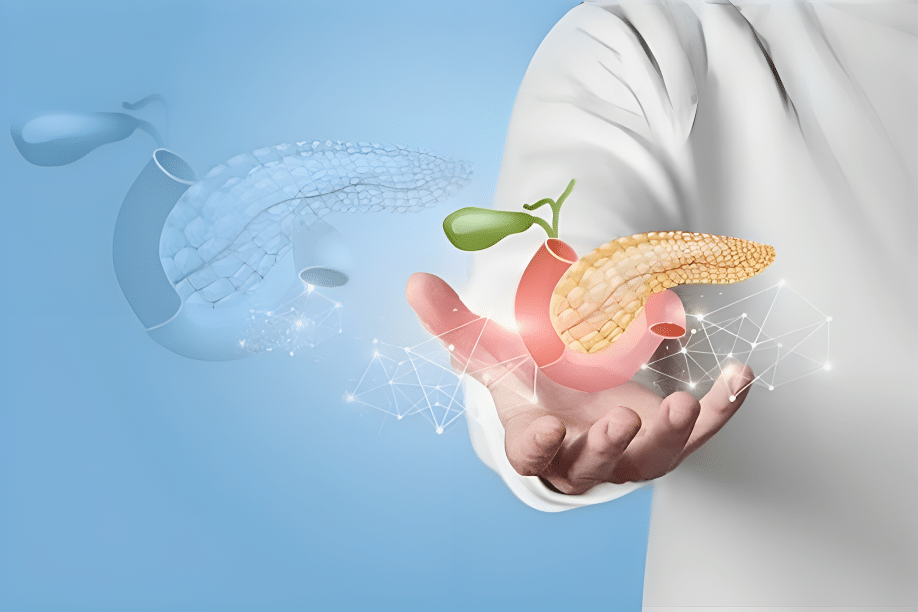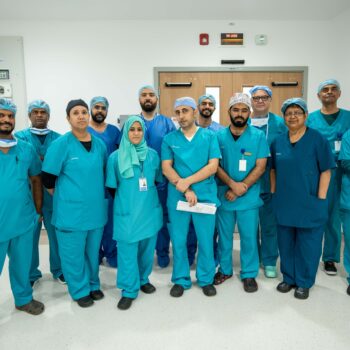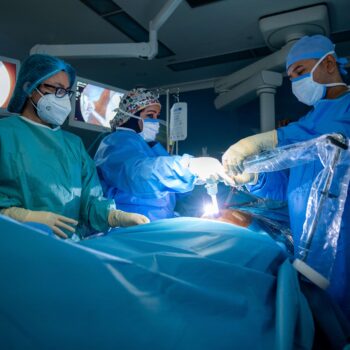What is the way to treat pancreatic cancer?
Article: Dr Abdallah Al Farai- Surgical Oncology
The pancreas is a gland located behind the stomach and secretes hormones that help regulate sugar in the body and aid digestion through direct secretion into the blood or through the pancreatic duct directly connected to the duodenum. Pancreatic cancer or pancreatic ductal adenocarcinoma is one of the uncommon types, but it is usually severe and occurs due to a defect in the proliferation of pancreatic cells as a result of an inherited or acquired genetic defect, and the acquired genetic defect is the most common and represents 90% of cases. According to the Omani Ministry of Health report issued in 2022 on the number of cancer cases during 2019, 36 new cases were diagnosed (17 in men and 19 in women), and the number has been increasing over the past 25 years at least, which is similar to the increase in the number of cancer cases in general, globally.
The genetic defect that leads to pancreatic cancer in 10% of patients is inherited from parents to children. But in some cases, this genetic defect occurs during a person’s life, and its causes are not definitively clear, but there are factors that studies have shown to be related to the formation of this type of cancer.
Among these factors: smoking, diabetes, chronic pancreatitis, obesity and aging. Although most cases are diagnosed after the age of 65, the good news is that many of these factors can be controlled or changed.
Symptoms:
As for the symptoms of pancreatic cancer, some of them may be general and similar to symptoms of other diseases, and symptoms include one or more of the following:
- Pain: This is often in the middle or upper abdomen or in the back, and it can get worse with eating. The pain begins gradually and then becomes more severe with time.
- Loss of appetite and weight: Loss of appetite occurs either because of the disease itself or because of pain that may affect the patient’s acceptance of food. As a result of loss of appetite and lack of eating, weight loss occurs.
- Jaundice: What is meant by this is the yellowing of the skin and eyes, due to the increase in the yellow matter in the skin as a result of blockage of the bile duct coming from the liver. This is also accompanied by a change in the color of urine and excretion, that the urine becomes dark and the passage is light.
- Diarrhea: This type of diarrhea is characterized by its fatty nature, due to the indigestion of fat due to the lack of pancreatic juice reaching the small intestine.
- High blood sugar: Pancreatic cancer may sometimes appear through high blood sugar in a patient diagnosed with diabetes or an imbalance in glucose measurements in people with pre-diabetes.
Diagnosis:
Pancreatic cancer is difficult to detect in its early stages because the onset of symptoms is similar to other symptoms for more common causes. The injury is usually diagnosed by completing the picture through various tests, and these tests include the following:
- Blood test: A blood test can find a substance called a tumor marker. For pancreatic cancer, elevated levels of a protein (CA 19-9) secreted by pancreatic cancer cells may indicate a tumor in the pancreas.
Radiology: It mainly includes CT scans for its ability to examine the pancreas, in addition to examining the body in general for any effects or spread of the disease to other organs. It may also be added during the radiological examinations, an MRI scan, and a positron emission tomography scan.
- Endoscope: It is a tube inserted through the mouth and then into the stomach and duodenum. This scope is used to do ultrasound, to take a biopsy of the tumor, and to insert a stent into the bile duct if it is closed due to the tumor, and this scope usually works under general anesthesia.
- Surgical endoscope: It is an endoscope used in a few cases, where 2-3 incisions are made in the abdominal wall to insert the endoscope into the abdominal cavity and take a biopsy if necessary. Laparoscopic surgery is performed under general anesthesia and the patient can be discharged on the same or the next day.
- What Factors Can Reduce the Risk of Pancreatic Cancer?
Many of the factors that increase the risk of infection can be avoided or reduced, for example: smoking, obesity, diabetes, and chronic pancreatitis. Avoiding these factors and adhering to a balanced health system means avoiding many health problems, and the situation is not limited to pancreatic cancer.
Complications of Advanced Pancreatic Cancer:
As the cancer progresses to other stages, the symptoms that were found at the time of diagnosis may worsen, and other symptoms may appear according to the organ in which the disease has spread. These symptoms include: intestinal obstruction, frequent infections, and severe pain.
Treatment:
Treatment of pancreatic cancer, like many oncology treatments, depends on the combined efforts of more than one specialty and department in the health institution, such as: The Oncology Department, the Surgery and Endoscopy Department, the Radiology Department, the Nutrition Department, the Physiotherapy Department, the Palliative Therapy Department, and the Psychotherapy Department.
Treatment for pancreatic cancer also depends on its location in the pancreas, its connection to nearby blood vessels, the extent of its spread, and the patient’s condition in general. The types of treatments can be divided into three types:
- Topical treatments: here it is mainly meant surgical removal, and this is for the tumor in its early stages without spreading to other organs, and without or with limited adhesions to nearby blood vessels. This option may be surrounded by systemic (chemo) therapy.
In this category, radiation therapy also comes, for limited cases or as a palliative treatment to relieve symptoms of the disease.
- Comprehensive treatments: Here, chemotherapy is also mainly meant, and it is an option for tumors that have spread locally or in other organs, or as a complementary treatment after eradication.
To a limited extent, immunotherapy can be used as a systemic treatment for pancreatic cancer in some cases.
- Palliative treatments: It is any treatment used to soothe or alleviate the disease or its symptoms in its advanced stages.





